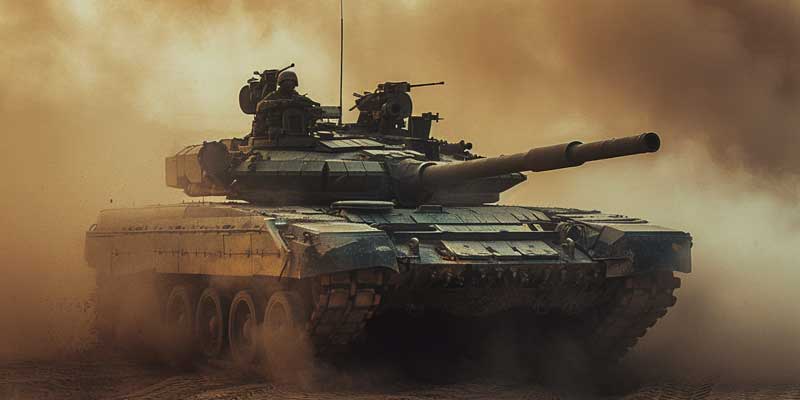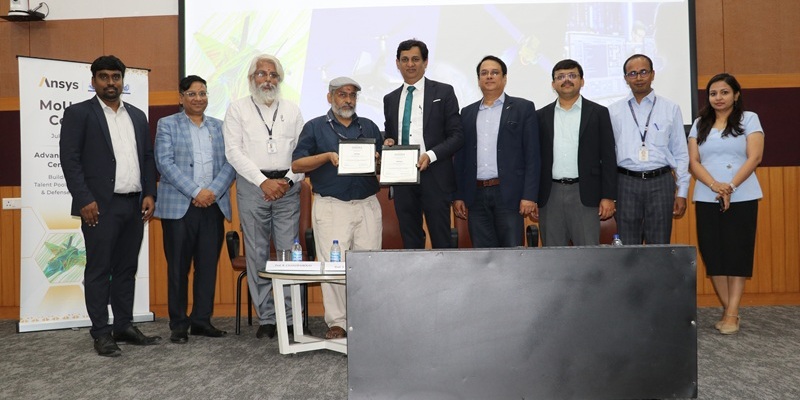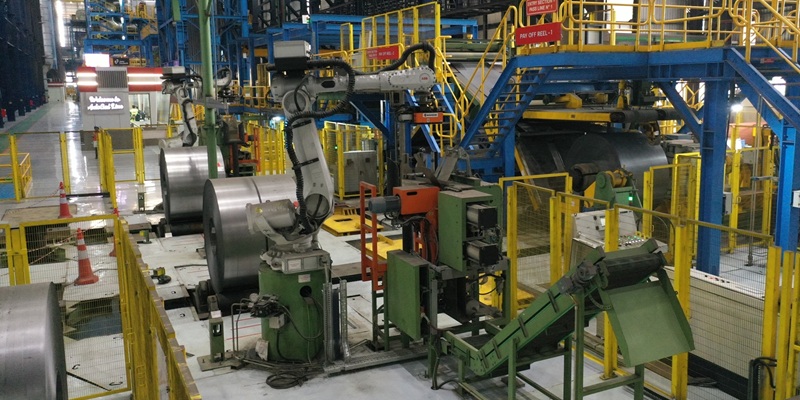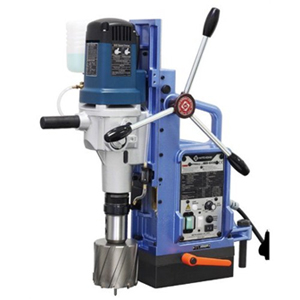Schedule a Call Back
Indian Aerospace & Defence Sector: The Emerging Global Manufacturing Powerhouse
 Articles
Articles- Jul 26,25

Figure 1: India's defence budget growth *BE is Budget Estimate
Source: Press Information Bureau Releases
Figure 2: Capital acquisition (modernisation) Budget 2015-25 BE: Army, Navy, Airforce
Source: Union Budget, Various Years, Ministry of Finance, Government of India
Some of the major developments in the past years are:
Indigenous defence production has grown robustly, reaching approximately Rs 1.27 trillion in FY 2023–24. Exports have also witnessed a sharp jump, from Rs 91.16 billion in 2019–20 to Rs 210.83 billion in 2023–24. India now exports defence equipment to more than 100 countries, including critical systems like the Akash missile, advanced lightweight torpedoes, and coastal surveillance systems.
Figure 3: India's defence export growth
Source: Press Information Bureau Releases
In 2024-25, defence exports reached Rs 152.33 billion (FY24: Rs 152.09 billion) from the private sector and Rs 83.89 billion (FY24: Rs 58.74 billlion) from DPSUs. DPSU exports grew by 42.85% in 2024-25, showcasing the increasing global acceptance of Indian defence products and industry integration into the global supply chain. The Department of Defence Production issued 1,762 export authorisations in 2024-25, up from 1,507 in 2023-24, registering a 16.92% growth, while the number of exporters increased by 17.4% during the same period.
India’s diverse export portfolio includes Armoured vehicles and bulletproof jackets, Dornier (Do-228) aircraft, Chetak helicopters, BrahMos supersonic missiles (Philippines deal worth $375 million), Tejas fighter jets, Coastal surveillance radar systems, fast interceptor boats, and lightweight torpedoes. India now exports defence equipment to over 100 countries, with the USA, France, and Armenia emerging as the top buyers in 2024-25.
The government aims to achieve Rs 500 billion in defence exports by 2029, backed by EXIM credit lines, export-friendly policies, and dedicated defence attachés posted overseas, reinforcing India's role as a global defence manufacturing hub while boosting economic growth. Export portfolio includes: Dornier aircraft, BrahMos missiles, PINAKA rocket launchers, Tejas fighter jets, ALH Dhruv helicopters, Bulletproof jackets, Radars and electronic warfare systems.
The Atmanirbhar Bharat and indigenisation drive
Defence indigenization refers to the strategic objective of a country to develop and enhance its own industrial and technological capabilities for producing essential defence equipment and systems. At the heart of India’s defence policy is a shift from import dependence to indigenous capability. The Defence Acquisition Procedure 2020 has been instrumental in promoting domestic vendors and mandating minimum local content. Over 14,000 items have been indigenised under the SRIJAN platform. The Positive Indigenization Lists have restricted imports of nearly 3,000 line items.
About 65% of defence equipment is now produced domestically—compared to 30–35% a decade ago, showcasing India's self-reliance in defence. A robust defence industrial base includes 16 DPSUs, over 430 licensed companies, and approximately 16,000 MSMEs, is strengthening indigenous production capabilities. The private sector plays a crucial role, contributing 21% to total defence production, fostering innovation and efficiency.
Some of the government’s initiatives towards defence indigenisation are:
This push has led to the development of strategic platforms like:
1. HAL Tejas: Production capacity ramped to 24 jets/year in 2024; plant expansions underway
2. LCH Prachand: Around Rs 450 billion contract for 156 units, each with over 65% indigenous content.
3. K9 Vajra-T: Artillery deal signed in December 2024 and has more than 60% indigenous content.
4. Tata-Airbus JV: Helicopter assembly line for H125 (10 units/year) launching in 2026.
5. Tata-Airbus C-295 plant: Vadodara facility inaugurated and deliveries are expected to start in 2026.
Defence industrial corridors and MSME involvement
India has developed two major Defence Industrial Corridors—one each in Uttar Pradesh and Tamil Nadu. These corridors aim to create a globally competitive manufacturing ecosystem by integrating OEMs, MSMEs, start-ups, and academic institutions. Establishment of Defence Industrial Corridors in Uttar Pradesh and Tamil Nadu has been a game-changer. These corridors have attracted investments exceeding Rs 200 billion and have fostered the growth of participation from 16 DPSUs, over 16,000 MSMEs, 430+ licensed private firms and start-ups within the defence ecosystem. They are aimed at creating an integrated supply chain, promoting exports, and generating large-scale employment.
India has actively investing in new technologies such as artificial intelligence (AI), cyber defence, electronic warfare, and space-based assets. The Defence Research and Development Organisation (DRDO) has developed cutting-edge systems like the Anti-Satellite (ASAT) missile, advanced radar systems, hypersonic technology demonstrators, Quantum computing, AI-based command systems and Indigenous jet engines (HTFE-25, AMCA engine program). Private players have also joined hands in areas like drone manufacturing and AI-based surveillance systems.
Collaborations under iDEX and SPRINT programs are fostering over 300 start-ups, accelerating development in niche areas such as space warfare, smart munitions, and directed-energy weapons.
International collaborations and FDI inflows: The government has liberalized FDI norms in defence manufacturing, allowing up to 74% under the automatic route. This has led to joint ventures such as Tata-Airbus for the C-295 transport aircraft, Lockheed Martin-Tata Advanced Systems for F-21 fighter components, and Mahindra’s collaboration with Israeli firms for UAV production.
Significant growth into Navy Defence segment
India’s defence has significantly expanded into the marine segment, emphasizing indigenous warship and submarine production to strengthen maritime security and power projection. Key programs include the P-75 and P-75I submarine projects featuring advanced stealth capabilities and air-independent propulsion (AIP) systems, as well as the development of next-generation destroyers under Project 15B and stealth frigates under Project 17A. India has also commissioned its first indigenously built aircraft carrier, INS Vikrant, showcasing expertise in complex marine platforms and carrier-borne aviation integration. In parallel, advancements in naval combat management systems, indigenous sonar suites, underwater drones (AUVs), and integrated coastal surveillance networks are making India a regional leader in maritime defence technology, with strong potential for exports.
Commercial aerospace sector
India’s aviation industry has emerged as one of the fastest-growing and most dynamic sectors in the country. By the end of FY25, India recorded a 7.8% year-on-year growth in aviation, with domestic passenger traffic reaching approximately 165.7 million. Domestic aviation traffic in March 2025 was 148.8 lakh, up 5.9% from February 2025 and 11.3% year over year. As of 2024, India has cemented its position as the third-largest domestic aviation market globally, growing at an impressive 6.9% annual rate, the highest in the world. Passenger traffic hit 376 million in FY24, with 306 million domestic travelers, contributing approximately $54 billion to the Indian economy.
An essential component of aviation is the Maintenance, Repair, and Overhaul (MRO) industry, which guarantees aircraft safety and operational preparedness. Despite its importance, India imports nearly 90% of its MRO requirements, underlining the potential for domestic industry development.
With the aviation sector booming, India’s MRO segment is gaining traction. It is expected to generate 90,000 new jobs and save $ 2 billion in foreign exchange annually. The Indian MRO market, which was valued at $ 1.7 billion in 2021, is estimated to reach $ 4.0 billion by 2031, growing at a CAGR of 8.9%. Several companies are stepping in to localize MRO operations by setting up facilities that focus on airframes, engines, and avionics maintenance, reducing dependency on foreign service providers.
Challenges ahead and future outlook Despite these achievements, India’s defence sector faced challenges such as delays in procurement, bureaucratic hurdles, and technological gaps in critical areas like jet engines and advanced materials. However, policy reforms like the simplification of the licensing process, a push for positive indigenization lists, and the corporatization of the Ordnance Factory Board have addressed many of these bottlenecks.
Despite these challenges, outlook for the aerospace and defence sector for 2025–2035 period is very promising.
Strengthening indigenisation and reducing imports: India aims to achieve near-complete self-reliance in key defence technologies by 2035. Plans include indigenous development of fifth-generation Advanced Medium Combat Aircraft (AMCA), stealth UAVs, next-generation tanks, and indigenous aircraft carrier projects. The Defence Public Sector Undertakings (DPSUs) and private industries are expected to collaborate closely to achieve this vision.
Expanding defence exports: The government targets defence exports worth Rs 500 billion by 2030. Efforts include enhancing production capacities, fast-tracking export clearances, and offering competitive financing options to friendly countries. India plans to deepen defence ties with nations in Southeast Asia, Africa, Latin America, and the Middle East.
Investment in emerging technologies: India is focusing on technologies like quantum computing, directed energy weapons, hypersonic glide vehicles, and autonomous combat platforms. Initiatives like the Innovations for Defence Excellence (iDEX) and Defence India Startup Challenge are set to support over 300 start-ups working on breakthrough technologies.
Strengthening supply chains and MSME ecosystem: The next decade will see an expanded role for MSMEs and tier-2 and tier-3 suppliers in defence production. The government plans to integrate small players into global supply chains, encourage component-level exports, and promote technology transfers. This will not only improve cost efficiency but also create significant employment opportunities.
Enhancing infrastructure and testing facilities: Future plans include expanding integrated testing ranges, simulation centers, and specialized facilities for space and electronic warfare systems. The Defence Testing Infrastructure Scheme (DTIS) will help create world-class facilities for validating indigenous products and improving their competitiveness globally.
Expanding space and aerospace capabilities: India is set to invest heavily in aerospace, including military satellites, advanced surveillance platforms, and indigenous aircraft programs. The Indian Space Research Organisation (ISRO) and DRDO will collaborate closely on dual-use technologies, boosting both civil and military capabilities. Indigenous aero-engine programs are also a key priority.
Global partnerships and joint ventures: To accelerate capability development, India will strengthen partnerships with global defence majors from the US, France, Russia, Israel, and Japan. These partnerships will focus on technology transfers, co-development, and co-production, allowing India to integrate into global defence value chains.
Opportunities for investors The Indian aerospace and defence market is projected to reach $70 billion by 2030, driven by domestic demand and exports. Key investment opportunities include fighter aircraft manufacturing, UAVs, military electronics, space-based assets, naval systems, and MRO (Maintenance, Repair, and Overhaul) services.
Government incentives such as production-linked incentives (PLI), tax exemptions, and land allotments in defence corridors make India an attractive destination for both domestic and international investors. Furthermore, the growing global demand for reliable and cost-effective defence products positions India favorably as a trusted supplier.
Strategic importance of A&D sector
A robust aerospace and defence sector is crucial for India’s strategic autonomy and security interests. By reducing dependency on imports, India can better safeguard its borders, project power in its neighborhood, and play a larger role in global peacekeeping and humanitarian missions. Moreover, the sector's growth will have a multiplier effect on the economy, driving advancements in ancillary industries, creating high-skilled jobs, and fostering a culture of innovation.
The last six years have laid a strong foundation for India’s aerospace and defence sector, marked by increased budgets, indigenous breakthroughs, and a global export footprint. The next ten years promise to build on this momentum, transforming India into a major defence manufacturing hub and a top exporter.
With unwavering government support, rising private participation, and a focus on cutting-edge technologies, the sector is set to become one of the key drivers of India's economic and strategic growth story. For investors, partners, and innovators, the coming decade offers a rare and lucrative opportunity to be part of India's defence transformation.
About the author:
Rahul Bhandurge, Director - Sales & Business Development of BDB India Pvt Ltd, has over 17 years of market research & industry experience. His market experience spans India and international markets. He works closely with industry associations and trade bodies in India and abroad to lead strategic initiatives, promoting growth within industries and ecosystems.
Related Stories

Indian Aerospace & Defence Sector: The Emerging Global Manufacturing Powerhouse
Bolstered by rising budgets, modernisation drives, Make in India initiative and export expansion, India’s aerospace and defence (A&D) sector has emerged as a promising sector for investors. Rahul ..
Read more
Ansys and SASTRA Launch Centre of Excellence in Space & Defence
The Centre of Excellence has been unveiled to advance aerospace and defence technologies, providing an integrated platform for simulation, design, and research expertise.
Read more
AM/NS India opens Continuous Galvanising Line for High-Strength Automotive Steel
New facility engineered to manufacture world-class specialised, high-grade steel for automotive applications, with strength levels up to 1180 MPa; to substitute imports. The modern unit is part of t..
Read moreRelated Products
Troop Comforts revolutionises military gear with indigenous innovations
Troop Comforts Ltd (TCL), a state-owned defence corporation, has recently received a request for proposal (RFP) from the Northern Command of the Indian Army for its indigenously developed military gea Read more

















